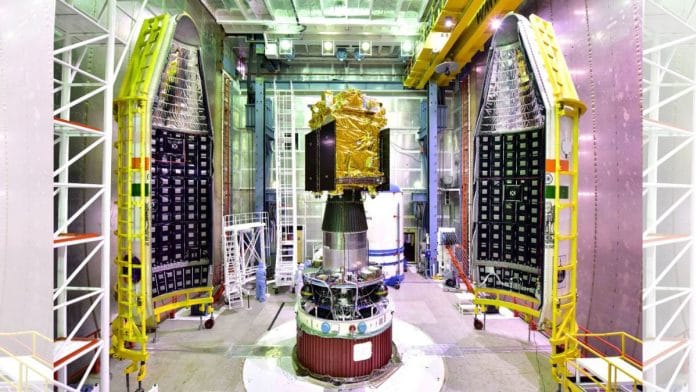New Delhi: After a successful lunar landing of Vikram Lander on 23 August as part of the Chandrayaan-3 mission, Indian Space Research Organisation (ISRO) is all set to launch its first solar mission, Aditya-L1, Saturday that will allow India to take a closer look at the Sun’s surface and understand its effect on Earth.
Placed at about 1.5 million km from the Earth, the satellite will be in a position to continuously view the Sun without any obstructions or eclipses. Its main objective is to observe the solar atmosphere using its seven payloads. The mission will be launched aboard ISRO’s PSLV XL rocket.
However, India is not the only country that has sent probes to the Sun. The US, Japan and China, along with the European Space Agency (ESA), have launched solar missions in the past. ThePrint takes a look at these missions from around the world.
The US
National Aeronautics and Space Administration (NASA) has been at the forefront of solar exploration with several missions launched over the years.
In August 1997, it launched the Advanced Composition Explorer (ACE) to observe and measure magnetic fields and particles in space from a vantage point approximately 1/100 of the distance from Earth to the Sun.
In October 2006, as part of the Solar Terrestrial Relations Observatory, or STEREO, two nearly identical spacecraft were launched into orbits around the Sun, which caused them to respectively pull farther ahead of and fall gradually behind the Earth. This enabled stereoscopic imaging of the Sun and solar phenomena, such as coronal mass ejections.
NASA also launched the Solar Dynamics Observatory in February 2010 and Interface Region Imaging Spectrograph in June 2013.
In August 2018, it launched the Parker Solar Probe. In December 2021, the probe became the first to fly through the Sun’s upper atmosphere, called the corona, and sampled particles and magnetic fields there.
Another mission is the Solar Orbiter, which was launched by NASA in February 2020 in collaboration with the ESA. It aims to understand how the Sun creates and controls the space environment in the solar system.
Additionally, NASA had partnered with the ESA and JAXA (Japan Aerospace Exploration Agency) to launch the Solar and Heliospheric Observatory (SOHO) in December 1995.
Also Read: As Chandrayaan-3 touches down on Moon’s surface, meet the key scientists behind mission
Japan
The Japan’s space agency JAXA has also been involved in solar research since 1981, when it launched its first solar observation satellite, Hinotori (ASTRO-A). It focused on studying solar flares using hard X-rays.
JAXA followed up with other missions, such as Yohkoh (SOLAR-A) in 1991, SOHO in 1995, and Transient Region and Coronal Explorer (TRACE) in 1998, which was launched in cooperation with NASA.
In 2006, Hinode (SOLAR-B) — a successor to Yohkoh (SOLAR-A) — was launched in collaboration with the US and the UK. It investigated how the Sun affects the Earth.
Also Read: Software mimicking human perception — how Noida firm gave Chandrayaan-3 rover its ‘eyes’
Europe
ESA has also contributed to solar exploration, with missions such as Ulysses, which was launched in 1990 to study the space environment above and below the poles of the Sun.
In October 2001, ESA launched Proba-2, one of its smallest satellites. It had two solar observation experiments on board. Proba-2 is the second of the Proba series, although Proba-1 was not a solar exploratory mission.
ESA also collaborated with NASA to launch the Solar Orbiter in February 2020 and SOHO in December 1995.
China
China joined the solar exploration club on 8 October 2022, when it launched its first Advanced Space-based Solar Observatory (ASO-S). It was developed by National Space Science Centre, Chinese Academy of Sciences (CAS).
(Edited by Richa Mishra)
Also Read: India’s CLRI scientists make vegan leather from mangos, use collagen for diabetics, cancer






